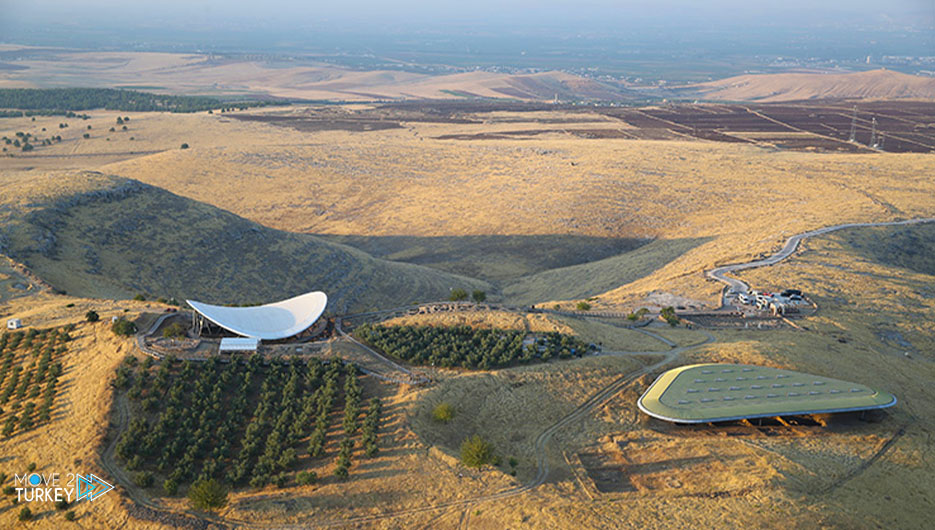
On Sunday, hot air balloon tours began in the Turkish province of Şanlıurfa over the archaeological site of “Göbekli Tepe”, which is described as “the zero point in human history” and dates back 12,000 years.
After its discovery in 1963 and its inclusion on the UNESCO World Heritage List in 2018, the number of visitors increased day after day, and the competent authorities then provided more options for local and foreign visitors to the historical site and its surroundings.
In line with the permits obtained from the Ministry of Culture and Tourism and the Directorate General of Civil Aviation, hot air balloons began flying in the skies of “Göbekli Tepe”.
Visitors can see the archaeological site of “Göbekli Tepe” and the vast expanses of the fertile plains of Harran from the sky via balloons that begin flying at sunrise.
Director of the Culture and Tourism Department in Şanlıurfa Aydın Aslan said that the balloon flights are being carried out with the support of the Turkish Ministry of Culture and Tourism.
He expressed his belief that the balloon tours will increase the number of visitors to Şanlıurfa.
He said: “We believe that these tours will increase the number of visitors and the days they stay in our city and will bring great benefits in the future.”
-Advertisement-
He pointed out that “Göbekli Tepe” and its natural surroundings are listed on the UNESCO list, and thanks to the balloons, visitors will be able to see the site from the air.
“Göbekli Tepe” is one of the oldest places of worship on Earth. It was discovered in 1963 by researchers from the University of Istanbul and the University of Chicago in the United States. Excavation and research work continued for about 54 years.
In 1995, many artifacts were discovered in the area, including stone obelisks in the shape of “T” dating back to the Neolithic era, measuring between 3 and 6 meters in length and weighing between 40 and 60 tons, with drawings, animal figures and human statues on them.
At the same time, the ruins of the Göbekli Tepe Temple, one of the oldest places of worship in the world, were discovered. It is about 7,500 years older than the pyramids of Egypt and the Stonehenge ruins in southwest Britain.
The Göbekli Tepe archaeological area, which has been listed as a UNESCO World Heritage Site since July 2018, includes the oldest group of rock-cut buildings in northern Mesopotamia, dating back 12,000 years.
Many books, films and documentaries have covered the story of the area, the latest of which was the documentary film titled “The Inhabitants of Göbekli Tepe.”






















